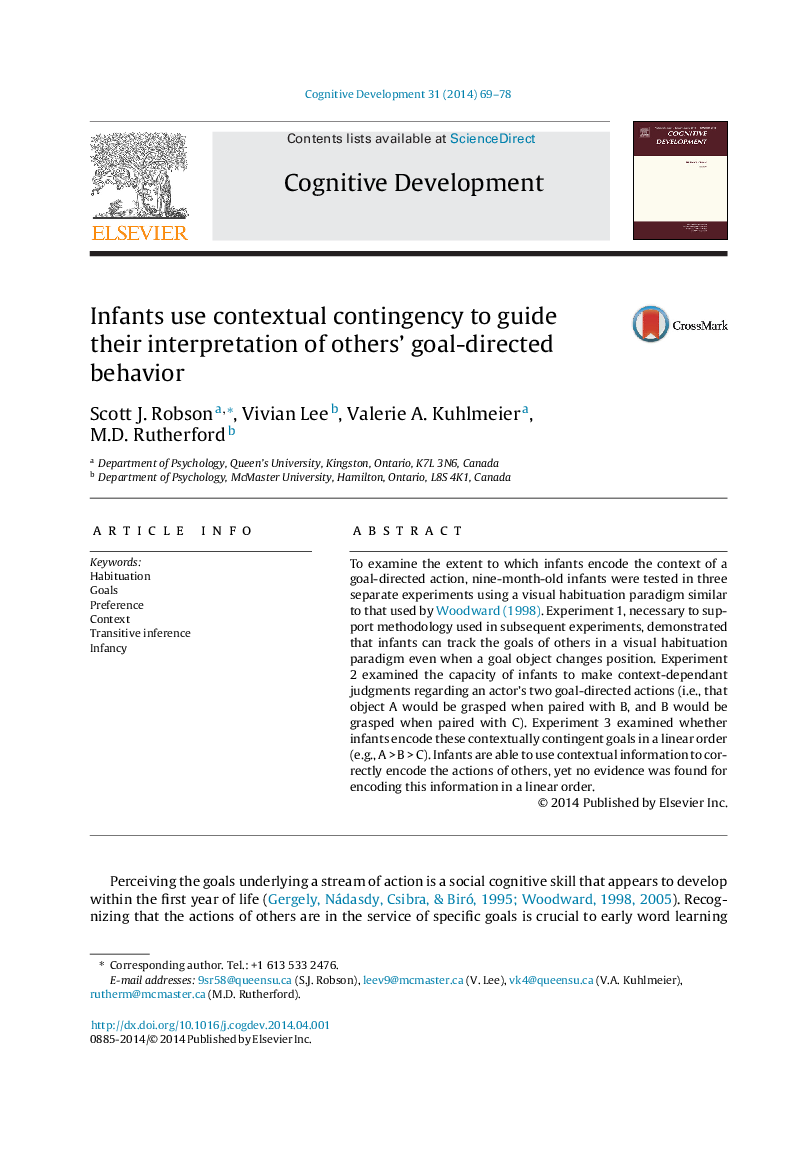| Article ID | Journal | Published Year | Pages | File Type |
|---|---|---|---|---|
| 7272546 | Cognitive Development | 2014 | 10 Pages |
Abstract
To examine the extent to which infants encode the context of a goal-directed action, nine-month-old infants were tested in three separate experiments using a visual habituation paradigm similar to that used by Woodward (1998). Experiment 1, necessary to support methodology used in subsequent experiments, demonstrated that infants can track the goals of others in a visual habituation paradigm even when a goal object changes position. Experiment 2 examined the capacity of infants to make context-dependant judgments regarding an actor's two goal-directed actions (i.e., that object A would be grasped when paired with B, and B would be grasped when paired with C). Experiment 3 examined whether infants encode these contextually contingent goals in a linear order (e.g., AÂ >Â BÂ >Â C). Infants are able to use contextual information to correctly encode the actions of others, yet no evidence was found for encoding this information in a linear order.
Related Topics
Social Sciences and Humanities
Psychology
Developmental and Educational Psychology
Authors
Scott J. Robson, Vivian Lee, Valerie A. Kuhlmeier, M.D. Rutherford,
